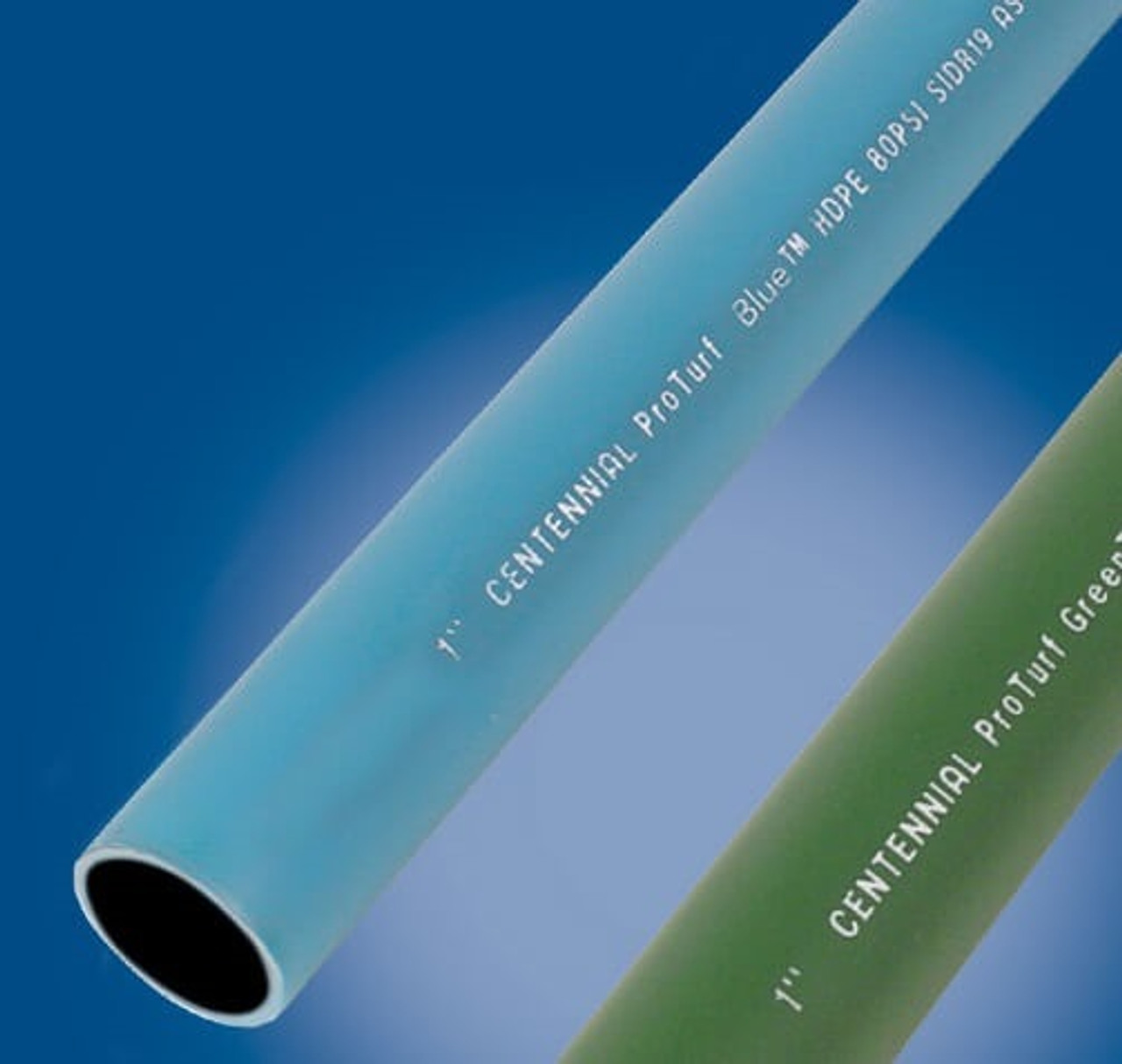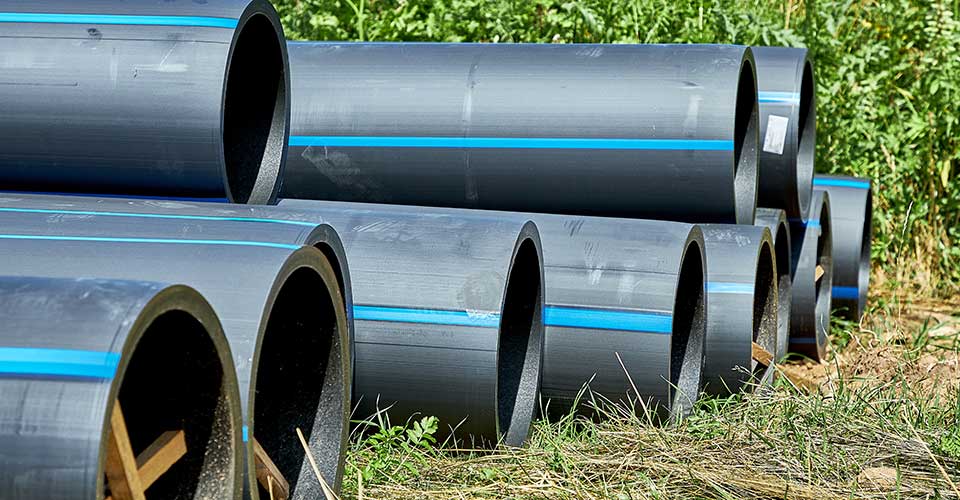Texas hdpe pipe manufacturer: Sustainable Innovations
Wiki Article
Explore the Manufacturing Process Behind High-Quality HDPE Pipe and Its Applications
The production process of top quality HDPE pipelines is detailed and methodical. It begins with the option of resources that improve efficiency. Following this, ethylene undertakes polymerization to develop material, which is after that formed via extrusion. Quality control is paramount, making sure that the last item satisfies rigorous criteria. Nonetheless, the trip of HDPE pipes doesn't end with production. Their applications throughout different sectors expose a more comprehensive relevance worth checking out.Comprehending HDPE: Properties and Advantages

High-density polyethylene (HDPE) is a flexible polycarbonate known for its durability and resistance to various ecological variables. This product exhibits excellent tensile stamina, making it appropriate for demanding applications. Its low-density framework adds to a light-weight item, facilitating convenience of managing and installment. HDPE also showcases exceptional resistance to chemicals, which minimizes degradation when exposed to harsh compounds.
The product's reduced dampness absorption additionally enhances its long life, making it optimal for usage in pipes and tank. In addition, HDPE is immune to ultraviolet (UV) radiation, making certain that products keep their stability even when subjected to sunshine. Furthermore, its adaptability permits the creation of detailed forms without compromising stamina. The environmentally friendly nature of HDPE, often stemmed from recycled products, includes in its appeal, promoting lasting practices in manufacturing. Generally, these homes and benefits make HDPE a preferred choice for different industrial and customer applications.
Basic Material Selection for HDPE Production
The option of basic materials for HDPE manufacturing is essential to confirm the final product satisfies the wanted specifications and high quality requirements. High-density polyethylene (HDPE) is mostly generated from polymerized ethylene, acquired from nonrenewable fuel sources such as natural gas or crude oil. The top quality of these feedstocks greatly influences the mechanical and thermal homes of the final HDPE.Additives also play a significant function in enhancing HDPE's performance, consisting of anti-oxidants, UV stabilizers, and colorants, which enhance longevity and resistance to ecological factors. The choice process must consider not just the chemical structure of the raw products but additionally their handling attributes to assure efficient production.
The sourcing of raw materials need to focus on sustainability and compliance with ecological guidelines, as responsible techniques are crucial in today's market. Inevitably, mindful basic material option lays the foundation for creating top notch HDPE pipelines appropriate for varied applications.
The Extrusion Process: Shaping HDPE Pipeline
The extrusion process plays an essential role in forming HDPE pipelines, starting with meticulous product prep work strategies that guarantee suitable flow and consistency. Just as vital is the layout of the die, which directly influences the final measurements and surface area quality of the pipe. With each other, these elements add significantly to the effectiveness and high quality of HDPE pipeline manufacturing.Material Preparation Methods
Effective manufacturing of HDPE pipes starts with meticulous product preparation techniques, especially the extrusion process. During this phase, high-density polyethylene resin is initial dried out to get rid of wetness, making certain ideal flow attributes. The material is after that fed right into the extruder, where it goes through heating and melting, transforming into a viscous state. This heating procedure is carefully controlled to maintain the material's honesty and performance. The liquified HDPE is forced with a die, forming it into a constant pipe type. Appropriate temperature administration during extrusion is essential, as it directly affects the material's residential properties and the final product high quality. Once shaped, the HDPE pipe is cooled and reduced to defined sizes, all set for subsequent processing and applications.Die Layout Value
Precision in die style plays an important role in the extrusion process of HDPE pipelines. The die functions as the final shaping device, straight influencing the pipeline's measurements, wall thickness, and surface coating. A well-designed die assurances consistent product circulation, minimizing problems such as abnormalities and vulnerable points. The geometry of the die should be maximized to fit the certain buildings of HDPE, including its thickness and thermal behavior during extrusion. Additionally, the cooling price of the material as it passes with the die can noticeably affect the pipeline's structural honesty. As a result, buying innovative die innovation is vital for producers intending to produce premium HDPE pipelines that satisfy sector requirements and customer expectations.High Quality Control Actions in HDPE Manufacturing
Although different aspects affect the quality of HDPE pipe production, efficient quality assurance measures are crucial to ensure uniformity and reliability in the final product. Secret high quality control practices consist of extensive product inspection, confirming that the raw polyethylene meets well established criteria for purity and density. Throughout the extrusion process, specifications such as temperature, stress, and cooling time are carefully kept an eye on to keep dimensional precision and structural honestyFurthermore, post-production testing is important; producers frequently conduct hydrostatic examinations to assess the pipeline's stamina and resistance to stress. Aesthetic assessments for surface area problems better improve quality control. Qualification from appropriate criteria organizations, like ASTM or ISO, gives an added layer of reputation. By applying these thorough high quality control procedures, manufacturers can lessen problems, enhance performance, and ensure that the HDPE pipelines fulfill the particular requirements of numerous applications, eventually leading to client fulfillment and rely on the product.
Applications of HDPE Pipe Throughout Industries
HDPE pipes are made use of throughout various industries due to their sturdiness and versatility. In water distribution systems, they assure efficient shipment, while in wastewater management, they offer trusted services for waste transport. In addition, agricultural irrigation networks profit from HDPE's resistance to rust and versatility, making it a perfect choice for contemporary farming methods.
Water Distribution Equipments
A significant variety of sectors count on high-density polyethylene (HDPE) pipelines for efficient water distribution systems. Known for their durability and resistance to corrosion, HDPE pipelines are commonly used in community water networks, agricultural irrigation, and commercial applications. Their lightweight nature facilitates simple handling and installment, reducing labor costs and time. Furthermore, HDPE pipelines can accommodate various pressure levels, making them appropriate for both reduced and high-pressure systems. Pipe Manufacturing Midland TX. The adaptability of the material allows for smooth assimilation right into existing framework, reducing the requirement for substantial excavation. HDPE's resistance to chemical leaching assurances that the water supplied stays secure and clean, making it an excellent selection for preserving the top quality of potable water across numerous fields.Wastewater Administration Solutions
Reliable water distribution systems likewise lead the way for cutting-edge wastewater management options, where high-density polyethylene (HDPE) pipelines play a considerable function. Prominent for their toughness and resistance to corrosion, HDPE pipes are suitable for delivering wastewater in numerous setups. Their versatility enables easy installment in complex settings, lessening the need for comprehensive excavation. Additionally, HDPE's smooth indoor surface decreases rubbing, boosting circulation prices and effectiveness. These pipelines are additionally resistant to chemical leaching, making sure that pollutants do not compromise the surrounding setting. Industries, towns, and treatment facilities increasingly rely upon HDPE pipes for their reliability and durability, making them a recommended selection for modern-day wastewater administration systems. This versatility highlights the essential importance of HDPE pipes throughout countless applications.Agricultural Irrigation Networks
Agricultural irrigation networks profit significantly from using high-density polyethylene (HDPE) pipes, which provide reliable and reputable water distribution to crops. HDPE pipes are light-weight, making them very easy to move and mount, while their versatility enables for different setups in varied surfaces. These pipelines show outstanding resistance to rust, chemicals, and UV radiation, ensuring sturdiness in severe farming atmospheres. Furthermore, their smooth indoor surface area reduces friction loss, optimizing water flow and reducing power prices connected with pumping. The long life of HDPE pipes, typically surpassing 50 years, adds to decrease maintenance and substitute expenditures. Farmers significantly count on HDPE pipes to enhance watering performance and advertise lasting farming practices, inevitably leading to boosted crop yields and resource conservation.
Future Fads in HDPE Pipeline Technology
As the need for lasting and reliable framework expands, advancements in HDPE pipeline innovation are poised to transform various sectors. Emerging patterns include the integration of smart technologies, such as sensors and IoT capabilities, which help with real-time surveillance of pipe problems, reducing upkeep expenses and avoiding leakages. Additionally, the growth of innovative manufacturing techniques, such as 3D printing, is making it possible website for the manufacturing of facility, personalized pipeline layouts that deal with details project needs.The focus on recycling and round economic climate techniques is driving the technology of HDPE pipes made from recycled materials, improving sustainability. Enhanced jointing techniques, such as electro-fusion and mechanical installations, are additionally enhancing setup efficiency and dependability. Ultimately, the expanding focus on environmental regulations is pressing makers to take on greener production processes, ensuring that HDPE pipelines not just satisfy sector criteria however likewise promote a more sustainable future for framework development.
Frequently Asked Questions
Just How Does HDPE Contrast to Various Other Plastic Products?
HDPE outmatches several various other plastic products concerning durability, chemical resistance, and flexibility. Its low thickness and high tensile stamina make it perfect for numerous applications, typically exceeding options in both efficiency and durability.What Are the Ecological Influences of HDPE Manufacturing?
The ecological impacts of HDPE manufacturing include greenhouse gas discharges, energy intake, and prospective air pollution from making procedures. In addition, improper disposal can bring about dirt and water contamination, elevating issues about long-lasting ecological impacts.Can HDPE Water Lines Be Recycled?
Yes, HDPE pipes can be recycled. Numerous centers accept utilized HDPE for handling, transforming it right into new items. This recycling adds to sustainability efforts, lowering plastic waste while saving resources and energy in the production cycle.What Is the Life-span of HDPE Water Lines?

Just How Do Temperature Variations Affect HDPE Pipeline Performance?
Temperature variations substantially influence HDPE pipeline performance, impacting adaptability and stamina. Heats can cause softening, while reduced temperatures might cause brittleness, ultimately affecting the pipe's resilience and viability for different applications in varied settings.Report this wiki page